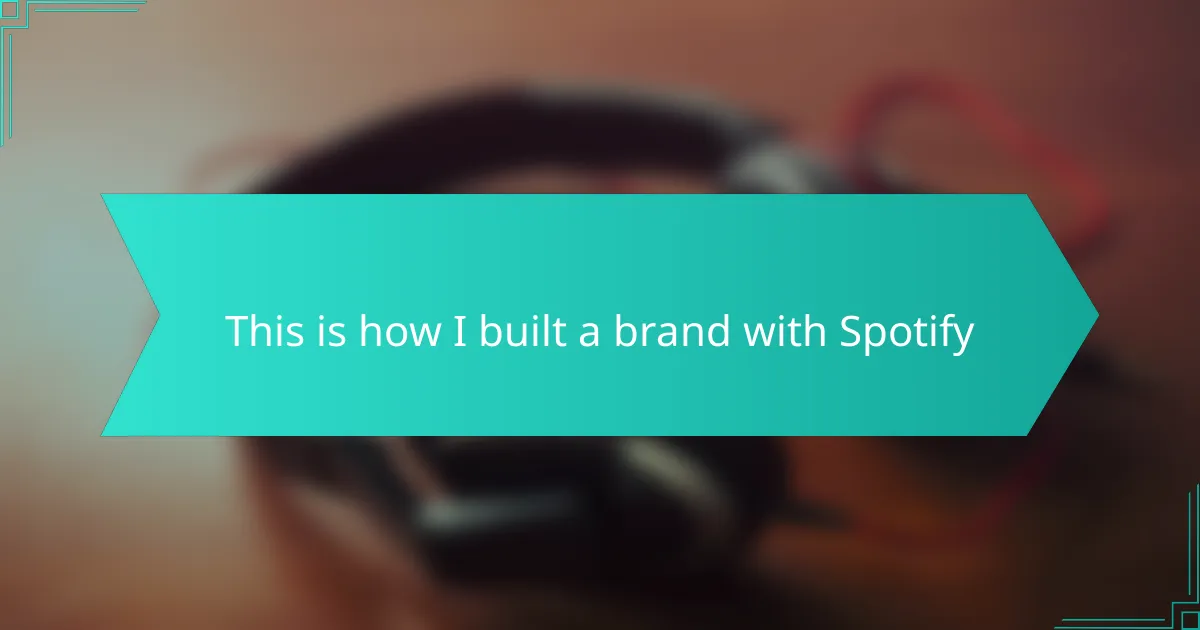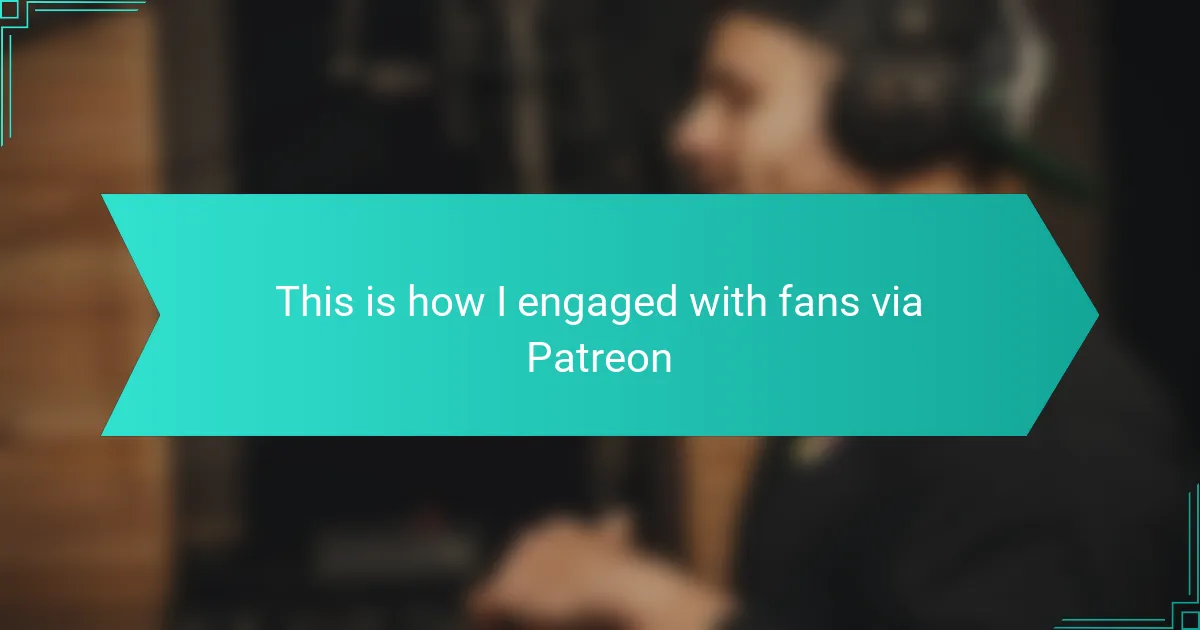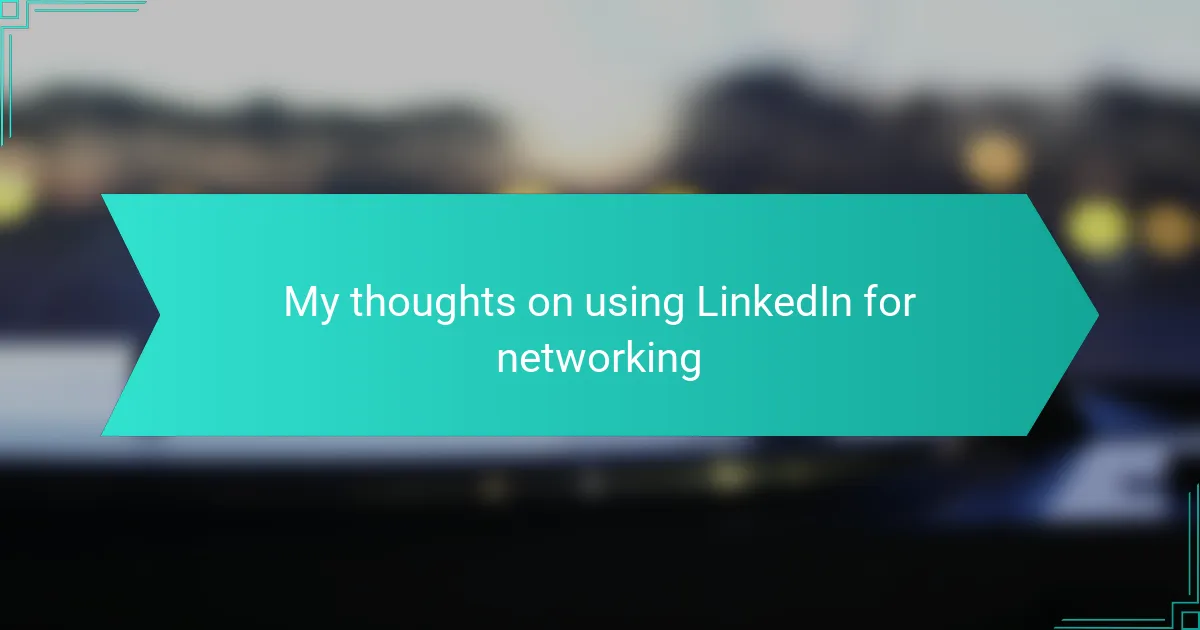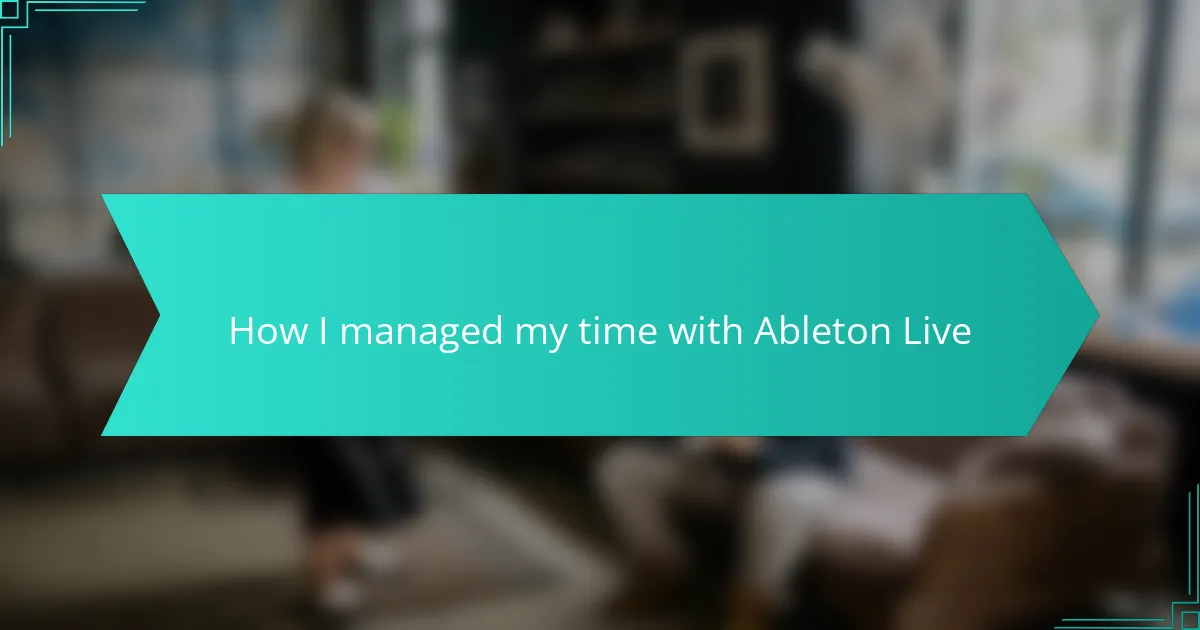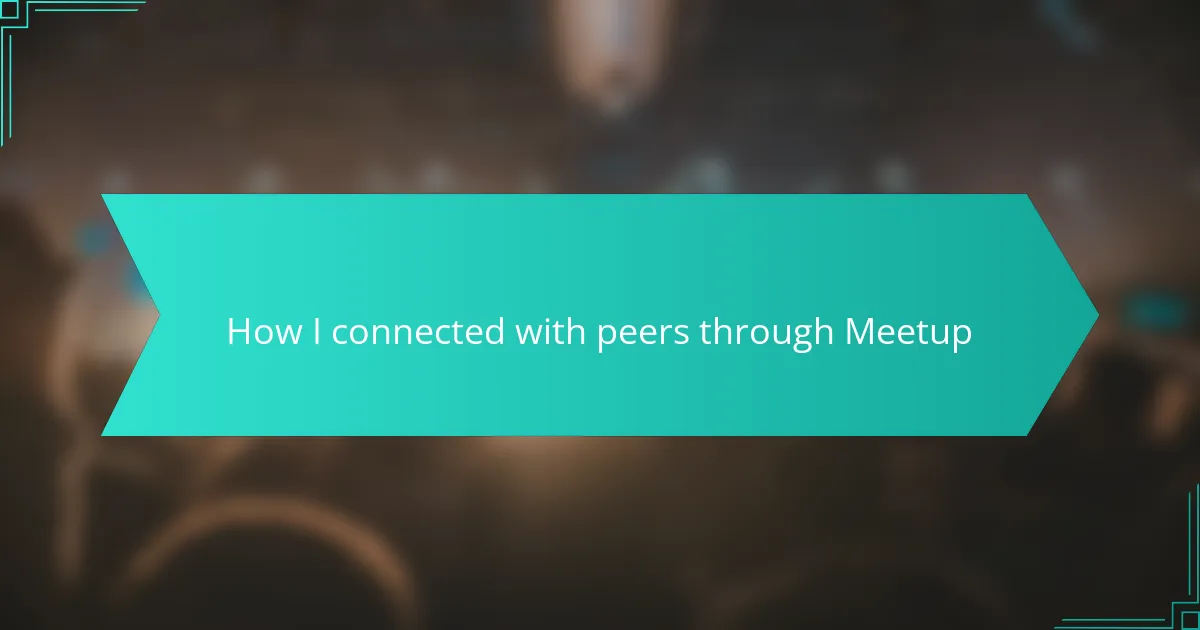Key takeaways
- Music branding involves building a consistent identity that connects emotionally with audiences through visual identity, sound consistency, and engagement.
- Spotify offers musicians global reach, valuable data analytics for targeted marketing, and playlist opportunities that can significantly boost streams and exposure.
- Engaging content on platforms like Spotify fosters a sense of community among fans, making personal storytelling and behind-the-scenes glimpses effective strategies.
- Analytics from Spotify can guide decisions in marketing and release strategies, ultimately enhancing audience connection and growing a music career.
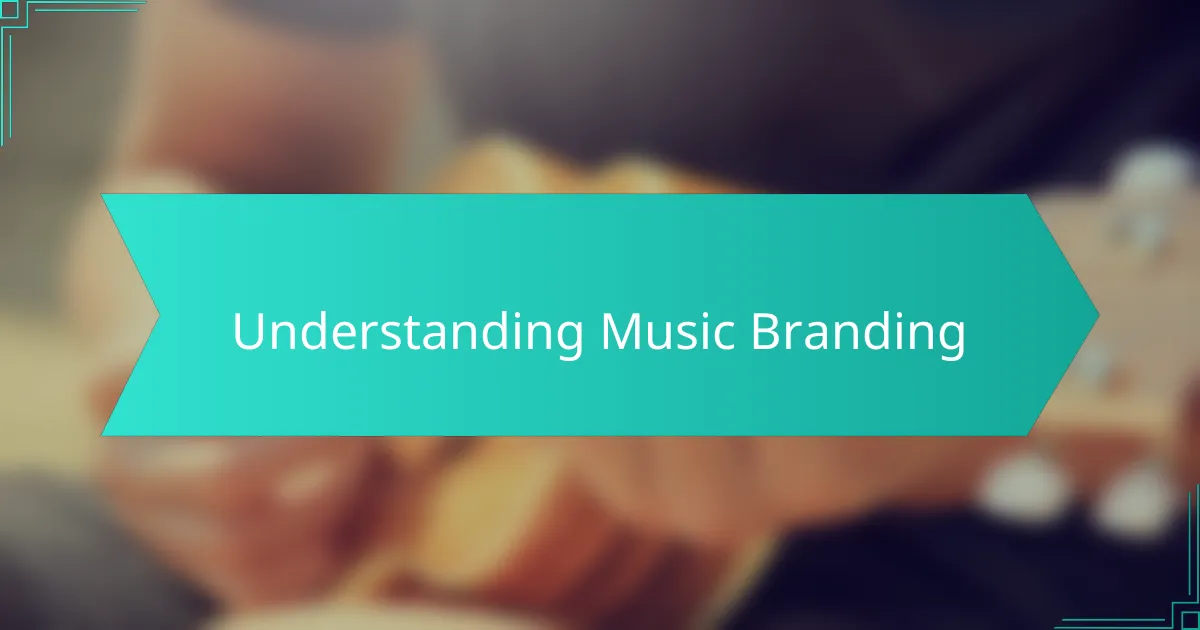
Understanding Music Branding
Understanding music branding is more than just a logo or a catchy song; it’s about creating a consistent identity that resonates with your audience. I learned this the hard way when I initially focused on my music alone, neglecting the importance of my overall presence. It was during a local gig that a fan approached me, excitedly sharing how my brand inspired them. That moment made me realize that music branding truly shapes perceptions and builds connections.
When I began to define my brand, I focused on several key elements:
- Visual Identity: I designed a logo and artwork that reflected my music style and personal story.
- Sound Consistency: I ensured my tracks had a signature sound, helping listeners identify my work immediately.
- Engagement: I interacted regularly with fans on social media, sharing behind-the-scenes content, which fostered a sense of community.
- Collaborations: I partnered with other artists to blend styles and reach new audiences, enhancing my brand’s appeal.
- Storytelling: I shared personal experiences through my lyrics and interviews, creating emotional connections with listeners.
These steps not only strengthened my brand but also made my music more relatable to the people who supported me.
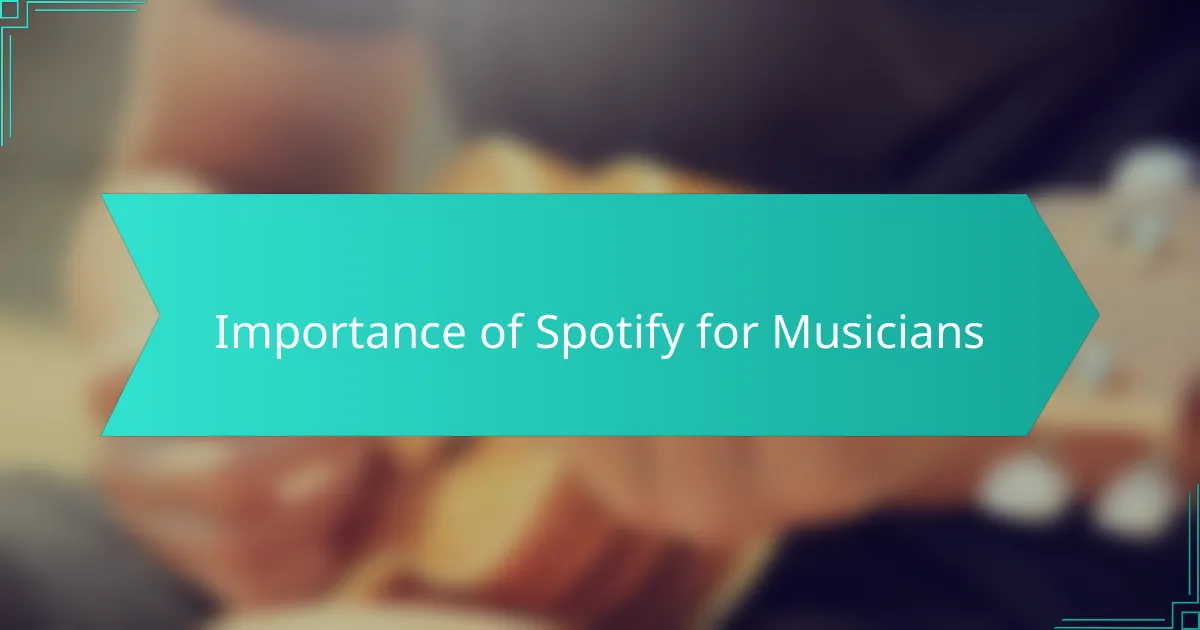
Importance of Spotify for Musicians
Spotify has become a game-changer for musicians today. I remember when I first uploaded my music; the immediate access to a global audience was exhilarating. It felt like opening the door to a world full of possibilities, where listeners could discover my sound without traditional barriers.
The platform offers not just music streaming but also tools that help artists connect with their fans. For instance, I was surprised to see how playlists can drive engagement. Getting featured on a popular playlist felt like winning a small lottery; suddenly, my streams skyrocketed and new fans started reaching out to me.
Moreover, the data analytics available on Spotify have allowed me to tailor my marketing efforts. Understanding where my listeners are based or what times they stream my songs has genuinely transformed how I promote my work. In this way, Spotify isn’t just a streaming service; it’s an essential resource for building a sustainable music career.
| Feature | Benefit |
|---|---|
| Global Reach | Access to worldwide audience and listeners |
| Data Analytics | Insights into listener behavior, allowing for targeted marketing |
| Playlist Opportunities | Increased streams and exposure through playlist placements |
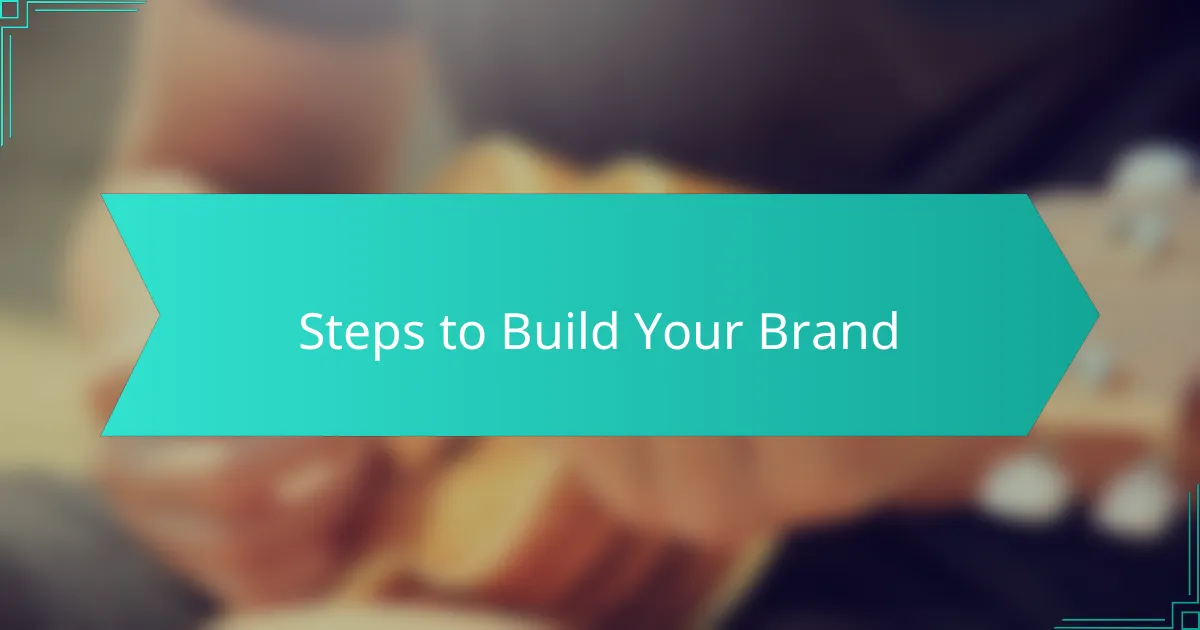
Steps to Build Your Brand
Building a brand as a musician is a journey. One crucial step is to identify your unique sound and style. When I first started, I spent months experimenting with different genres before I settled on what truly resonated with me. Understanding your musical identity is key—it shapes everything from your artwork to your marketing strategy.
Next, consistency in your content is vital. I remember when I launched my first single on Spotify; I made sure to have a cohesive visual style and a well-planned social media presence that matched my music’s vibe. This helped create a recognizable brand that fans could connect with emotionally.
Lastly, engage with your audience regularly. I found that sharing behind-the-scenes content or stories about my creative process not only fostered a sense of community but also made my fans feel valued. This connection ultimately translates to a strong, loyal fanbase, which is essential for any emerging artist.
| Step | Details |
|---|---|
| Identify Your Sound | Experiment with genres to find your unique style. |
| Maintain Consistency | Ensure your visuals and content align with your musical identity. |
| Engage with Fans | Share personal stories to foster community and loyalty. |
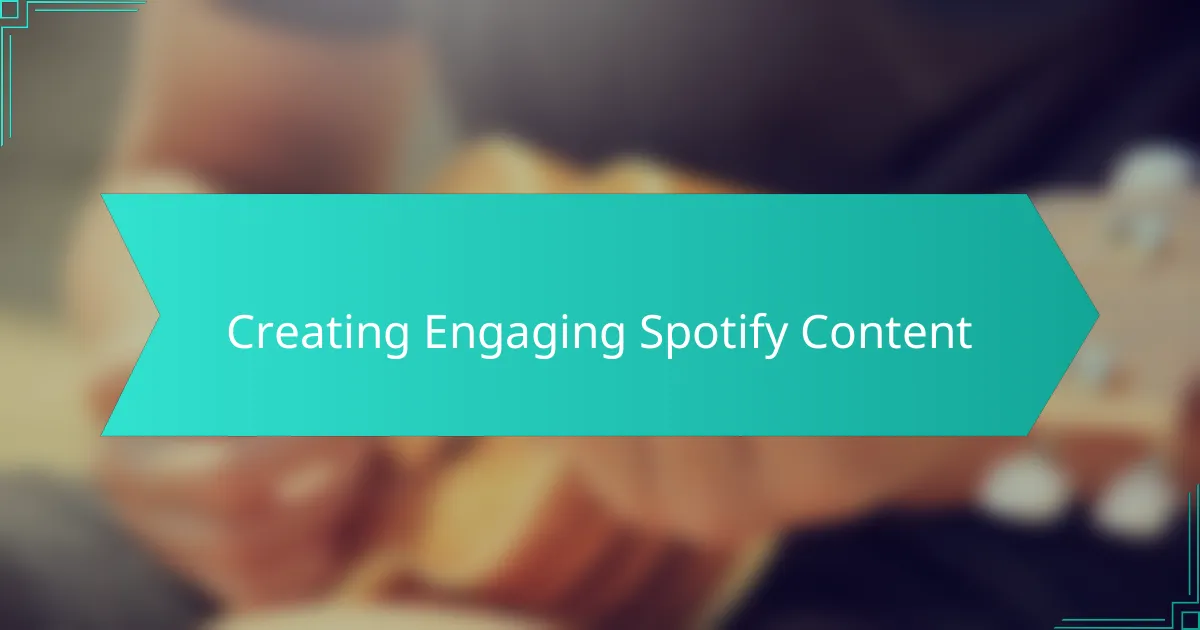
Creating Engaging Spotify Content
When creating engaging Spotify content, I found it essential to focus on authenticity. I’ve learned that listeners connect more deeply when they can relate to your personal story, your artistic journey, and the emotions behind your music. For instance, sharing the inspiration behind a song made my audience feel like they were part of my creative process, which ultimately fostered a loyal fan base.
In addition, using a variety of content types keeps things fresh. Here are some strategies that worked well for me:
- Share behind-the-scenes glimpses into your creative process.
- Create playlists that reflect your musical influences or mood.
- Use storytelling to explain the meaning of your songs.
- Host Q&A sessions to interact directly with your listeners.
- Collaborate with other artists to bring diversity to your content.
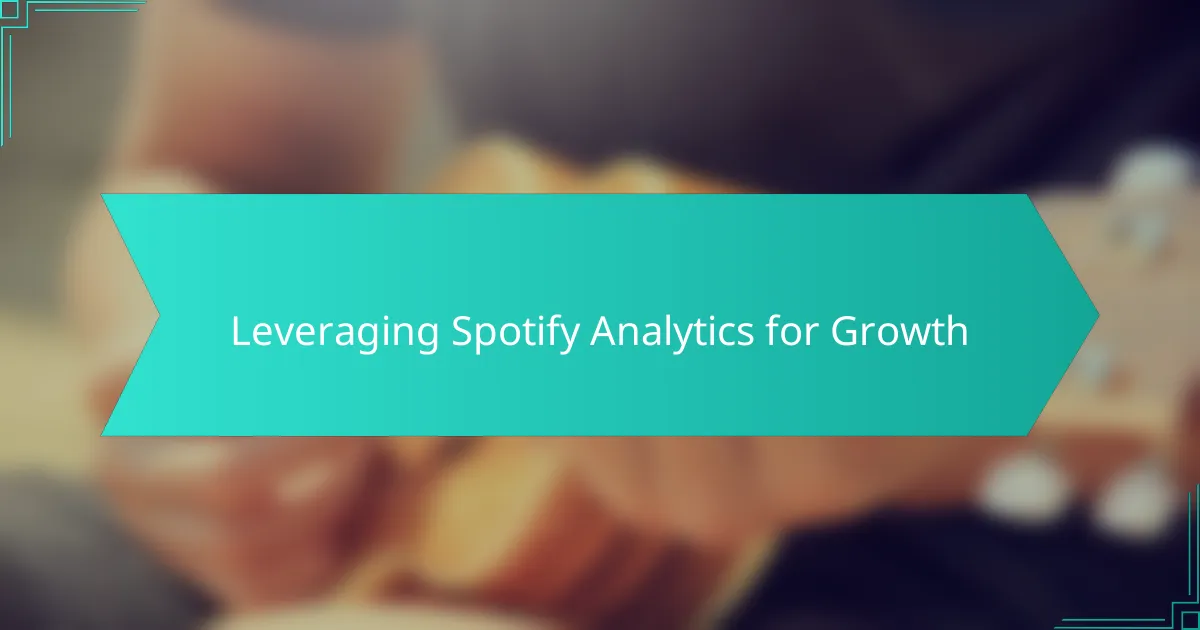
Leveraging Spotify Analytics for Growth
Utilizing Spotify Analytics has been pivotal in my journey to grow as a musician. At first, I was overwhelmed by the data—streams, listener demographics, and playlist performance all at my fingertips. But I quickly learned that these insights are gold. For instance, identifying that a significant portion of my audience came from Europe helped me plan a mini-tour that reached new fans and deepened my connection with existing ones.
When I started paying attention to peak listening times, it changed how I released music. I found that my fans were most active on weekends, so I shifted my release strategy accordingly. This little adjustment led to a noticeable boost in my streams and engagement. It’s fascinating how numbers can guide your decisions and lead to tangible results. Have you ever thought about how analytics could reshape your approach?
Moreover, I discovered the importance of playlist performance. Seeing which playlists drove the most streams for my songs enabled me to target my marketing efforts more effectively. I even reached out to curators with playlists that featured my music, which opened doors I never considered before. In this digital age, understanding and leveraging the power of Spotify Analytics is essential; it’s not just about making music but also about making smart decisions that facilitate growth.
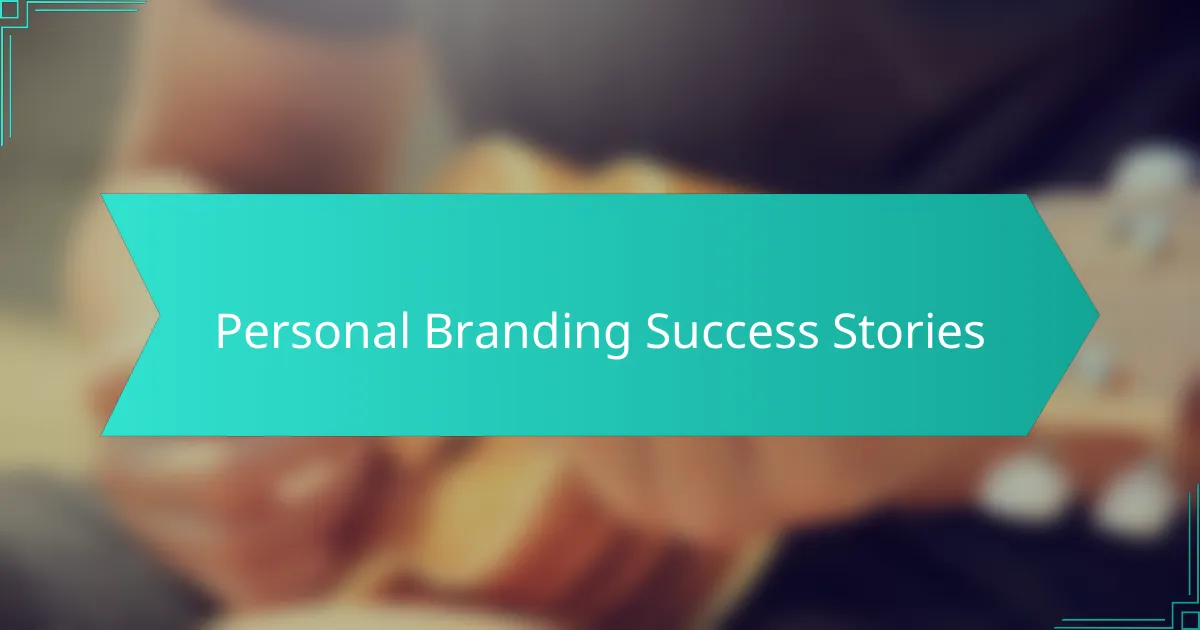
Personal Branding Success Stories
One artist I admire is Lizzo, who turned her passion into a brand that resonates with many. Through her authentic messaging and empowering lyrics, she built a loyal following on Spotify, showcasing how vulnerability and self-love can foster connection. I remember listening to her tracks and feeling a sense of empowerment that truly elevated my own creative journey.
Another inspiring story is that of Billie Eilish, who emerged from humble beginnings. By embracing her uniqueness and focusing on storytelling in her music, she crafted a brand that reflects her true self. The rawness of her sound and visuals has captivated audiences, and it’s a beautiful reminder of how individuality can shine through in a crowded space.
Here’s a comparison of these two powerful artists and their branding strategies:
| Artist | Branding Strategy |
|---|---|
| Lizzo | Empowerment and Authenticity |
| Billie Eilish | Uniqueness and Storytelling |
